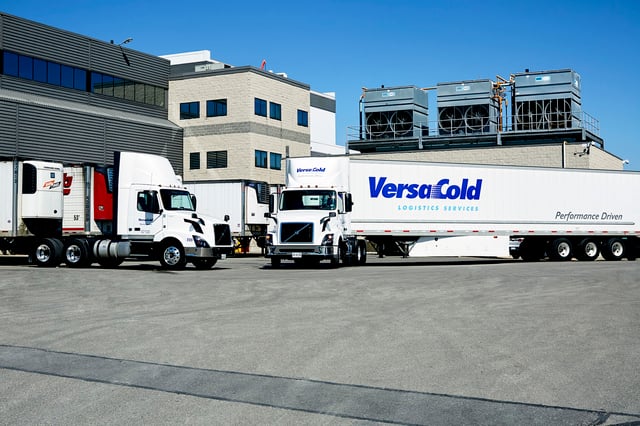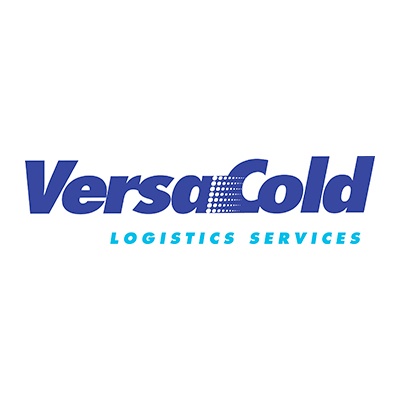
Like any industry, the cold chain logistics world has its own unique language that sometimes needs an additional explanation to people outside the industry. To help you understand some complex terms that are unique to the industry, VersaCold has comprised a list of commonly used terms and definitions as defined by trusted industry sites.
Check Out These Other Interesting Articles
How are LCVs Transforming VersaCold’s Transportation Network?
http://blog.versacold.com/lcvs-transforming-versacolds-transportation-network
Schooten & Sons Case Study
http://blog.versacold.com/schooten-sons-case-study
Auditability: A characteristic of modern information systems that is gauged by the ease with which data can be substantiated by tracing it to source documents, and the extent to which auditors can rely on pre-verified and monitored control processes - Inbound Logistics
Backhaul: The portion of a transport trip, typically associated with trucking, that is incurred when returning a vehicle to its point of origin. Ideally, the carrier will find some sort of freight to carry back, but if the trip is empty, it is called a deadhead - CSCMP
Bill of Lading (BOL): A transportation document that is the contract of carriage containing the terms and conditions between the shipper and carrier - CSCMP
Closed Loop MRP: A system built around material requirements planning that includes the additional planning processes of production planning (sales and operations planning), master production scheduling, and capacity requirements planning. Once this planning phase is complete and the plans have been accepted as realistic and attainable, the execution processes come into play. These processes include the manufacturing control process of input-output (capacity) measurement, detailed scheduling and dispatching, as well as anticipated delay reports from both the plant and suppliers, supplier scheduling, and so on. The term “closed loop” implies not only that each of these processes is included in the overall system, but also that feedback is provided by the execution processes so that the planning can be kept valid at all times - Inbound Logistics
Cold Storage (Refrigerated Warehousing and Storage): These establishments provide contract warehouse and storage services, using equipment designed to keep goods frozen. The services provided include blast freezing, tempering and modified atmosphere storage, in addition to the warehousing services typically provided by establishments in this industry group - Government of Canada
Dashboard: A performance measurement tool used to capture a summary of the key performance indicators/metrics of a company. Metrics dashboards/scorecards should be easy to read and usually have red, yellow and green indicators to flag when the company is not meeting its metrics targets. Ideally, a dashboard/scoreboard should be cross-functional in nature and include both financial and non-financial measures. In addition, dashboards/scorecards should be regularly reviewed – at least on a monthly basis, and weekly in key functions such as manufacturing and distribution, where activities are critical to the success of a company. The dashboards/scorecards philosophy can also be applied to external supply chain partners like suppliers to ensure that their objectives and practices align - Inbound Logistics
DC Bypass: A supply chain best practice that expedites time to market by skirting distribution centers altogether. Businesses using DC bypass: load products at the point of origin; assign shipments by ultimate destination; clear customs in bulk; deconsolidate at ports; and ship directly to retail outlets or customers. As a result, inventory remains continuously in motion. A traditional supply chain requires multiple handoffs to move product from origin to forwarder, through customs to delivery, and to end customers. By contrast, using DC bypass and outsourced logistics providers, furniture manufacturers, for example, can move products from Asia directly to American retailers. With regard to outbound transportation, this is also known as “Direct to Store,” a practice that occurs when vendors ship goods directly to the retail store instead of to the retailer’s distribution center (DC) - CSCMP
Direct Store Delivery (DSD): Process of shipping direct from a manufacturer’s plant or distribution center to the customer’s retail store, thus bypassing the customer’s distribution center - CSCMP
Distribution: The activities associated with the movement of material, usually finished goods or service parts, from the manufacturer to the customer. These activities encompass the functions of transportation, warehousing, inventory control, material handling, order administration, site and location analysis, industrial packaging, data processing, and the communications network necessary for effective management. It includes all activities related to physical distribution, as well as the return of goods to the manufacturer. In many cases, this movement is made through one or more levels of field warehouses - Inbound Logistics
Drayage: The service offered by a motor carrier for pick-up and delivery of ocean containers or rail containers. Drayage agents usually handle full-load containers for ocean and rail carriers - Inbound Logistics
Electronic Data Interchange (EDI): Intercompany, computer-to-computer transmission of business information in a standard format. For EDI purists, “computer-to-computer” means direct transmission from the originating application program to the receiving, or processing, application program. An EDI transmission consists only of business data, not any accompanying verbiage or free-form messages - Inbound Logistics
Fourth-Party Logistics (4PL): The term was registered by Accenture as a trademark in 1996 and defined as “a supply chain integrator that assembles and manages the resources, capabilities, and technology of its own organization with those of complementary service providers to deliver a comprehensive supply chain solution,” but is no longer registered. 4PL differs from third party logistics in the following ways: 1) a 4PL organization is often a separate entity established as a joint venture or long-term contract between a primary client and one or more partners; 2) a 4PL organization acts as a single interface between the client and multiple logistics service providers; 3) all aspects (ideally) of the client’s supply chain are managed by the 4PL organization; and 4) it is possible for a major third-party logistics provider to form a 4PL organization within its existing structure - CSCMP
Freight Consolidation: The act of combining individual shipments into a single lot to reduce costs or improve transport equipment utilization. Consolidation can take a variety of forms by customer, geography, shipping land or schedule. Consolidation may occur at the shipping facility or may be the service of a third party - CSCMP
Freight Forwarder: An organization which provides logistics services as an intermediary between the shipper and the carrier, typically on international shipments. Freight forwarders provide the ability to respond quickly and efficiently to changing customer and consumer demands and international shipping (import/export) requirements - CSCMP
Contact one of our Sales Specialists today and let us show you why we are the right choice for your business. sales@versacold.com or 1-800-563-COLD










